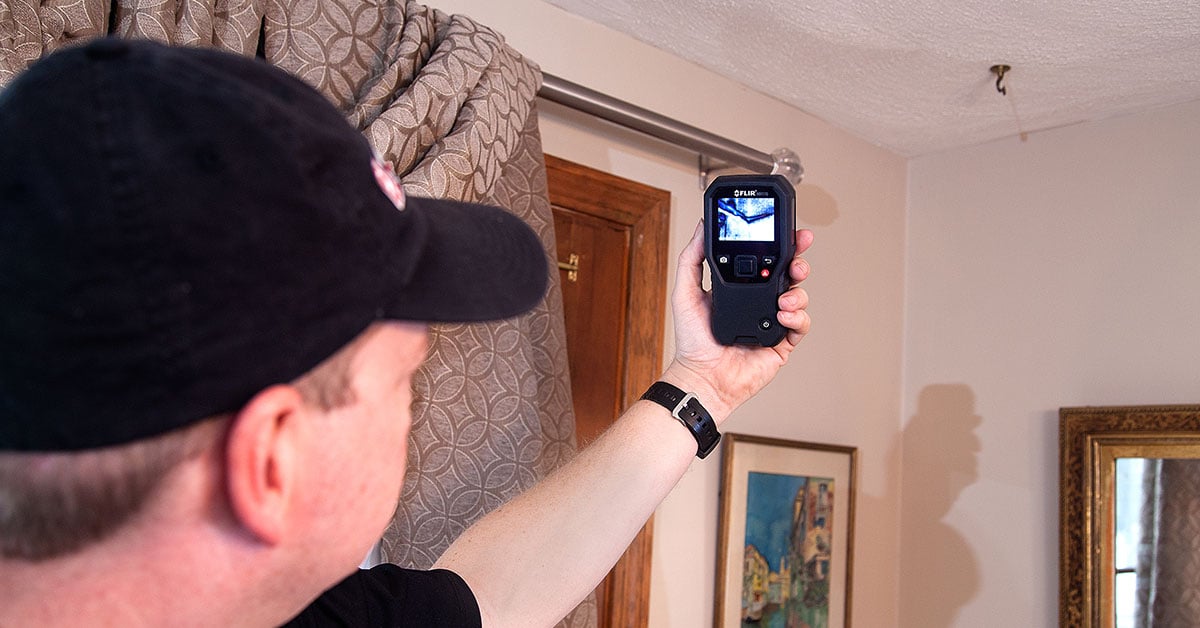Just about every person maintains their private perception when it comes to Locating water leaks.
.jpg)
Early detection of dripping water lines can alleviate a potential catastrophe. Some tiny water leakages may not be visible.
1. Check Out the Water Meter
Checking it is a proven way that aids you uncover leakages. If it relocates, that shows a fast-moving leak. This means you might have a slow leak that can even be underground.
2. Check Water Consumption
Evaluate your water bills and track your water intake. As the one paying it, you must discover if there are any type of discrepancies. If you find sudden changes, despite your consumption being the same, it means that you have leakages in your plumbing system. Keep in mind, your water expense must drop under the exact same range each month. An abrupt spike in your costs indicates a fast-moving leak.
Meanwhile, a constant rise every month, despite having the very same practices, shows you have a slow-moving leak that's additionally gradually escalating. Call a plumber to completely examine your building, especially if you feel a cozy location on your flooring with piping underneath.
3. Do a Food Coloring Test
When it comes to water intake, 30% comes from bathrooms. If the shade in some way infiltrates your bowl throughout that time without flushing, there's a leak between the container and dish.
4. Asses Exterior Lines
Do not neglect to inspect your outside water lines too. Ought to water seep out of the connection, you have a loosened rubber gasket. One small leak can throw away bunches of water as well as spike your water costs.
5. Check and Analyze the Circumstance
House owners need to make it a routine to check under the sink counters as well as also inside cabinets for any bad odor or mold and mildew development. These two warnings indicate a leak so punctual focus is required. Doing routine examinations, also bi-annually, can save you from a major issue.
Extra importantly, if you know your home is already old, keep a watchful eye on your heating units, hose pipes, pipes etc. Look for discolorations and weakening as a lot of pipes as well as home appliances have a life span. They will also normally degrade as a result of tear and wear. If you suspect dripping water lines in your plumbing system, don't wait for it to intensify. Call a professional plumber immediately so you don't end up with a horrible mess in your house.
Early detection of leaking water lines can reduce a prospective disaster. Some tiny water leaks may not be visible. Examining it is a surefire way that helps you uncover leaks. One tiny leakage can waste lots of water and also increase your water bill.
If you suspect leaking water lines in your plumbing system, don't wait for it to intensify.
How to Know If Your Home Has a Hidden Leak
Water Meter Reveals Inexplicable Water Usage
If you’d like to test whether or not there’s a leak somewhere in your home, you can do this using your water meter. Here is how to conduct the test:
Don’t use any water in your home for at least 30 minutes; this also means not turning on faucets or water-using appliances.
Go outside, and check your water meter for activity.
If your water meter shows that there was activity, even though no one was using any water, this proves that there is a leak in your home.
Visible Mold or Mildew Growth
Leaks behind walls create moist, dark environments that allow mold and mildew to grow and thrive. Eventually, you might see mold growth forming on the wall closest to a hidden leak.
If mold is growing in an area that receives a high amount of moisture, such as a bathroom, it may simply be an indication that better ventilation is needed. However, if you see mold growth on a wall or the ceiling in an area where you would not expect, you probably have a hidden leak.
Musty, Mildew Odor
Sometimes you might not be able to see the mold or mildew that is growing as a result of a leak. However, the smell can give the problem away just as easily. If you catch a whiff of something musty, there’s a good chance that old water is collecting somewhere in your home that you can’t see.
Stained/Warped Walls, Ceilings, or Floors
When your home soaks up water, a variety of red flags can become visible, including ceiling stains, bubbling drywall, warped walls, and sagging floors. While these issues can be caused by excess humidity, they can also be signs that a pipe or plumbing connection has started leaking behind your walls.
Inexplicably High Water Bill
After a while, you get a general sense for what your water bill should be. If you own a pool or sprinkler system, your bill will tend to be higher during summer. However, if you receive a water bill that seems especially high, and you can’t figure out what caused it, then you may have a hidden leak somewhere that’s increasing your bill.
https://www.plumbingjoint.com/blog/2019/july/how-to-know-if-your-home-has-a-hidden-leak/

As a fervent reader on Locating water leaks, I assumed sharing that article post was a good idea. For those who appreciated our blog entry please do not forget to share it. We enjoy reading our article about Detecting hidden plumbing leaks.
Reliable plumber? Dial!
Comments on “Unveil Hidden Water Line Leaks: 6 Tested Finding Techniques”